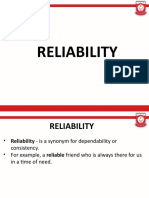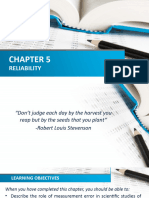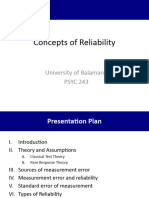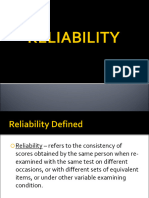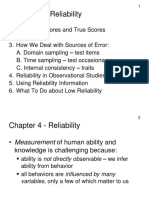0% found this document useful (0 votes)
39 views8 pagesWeek 4 - Reliability
The document discusses different types of reliability estimates used in psychometrics including test-retest reliability, parallel forms reliability, internal consistency reliability, and inter-scorer reliability. It also discusses factors that can impact reliability such as test characteristics, sampling, and error sources.
Uploaded by
mystically12345678Copyright
© © All Rights Reserved
We take content rights seriously. If you suspect this is your content, claim it here.
Available Formats
Download as PDF, TXT or read online on Scribd
0% found this document useful (0 votes)
39 views8 pagesWeek 4 - Reliability
The document discusses different types of reliability estimates used in psychometrics including test-retest reliability, parallel forms reliability, internal consistency reliability, and inter-scorer reliability. It also discusses factors that can impact reliability such as test characteristics, sampling, and error sources.
Uploaded by
mystically12345678Copyright
© © All Rights Reserved
We take content rights seriously. If you suspect this is your content, claim it here.
Available Formats
Download as PDF, TXT or read online on Scribd
/ 8



